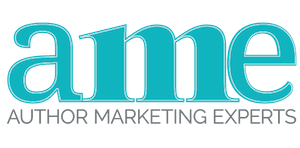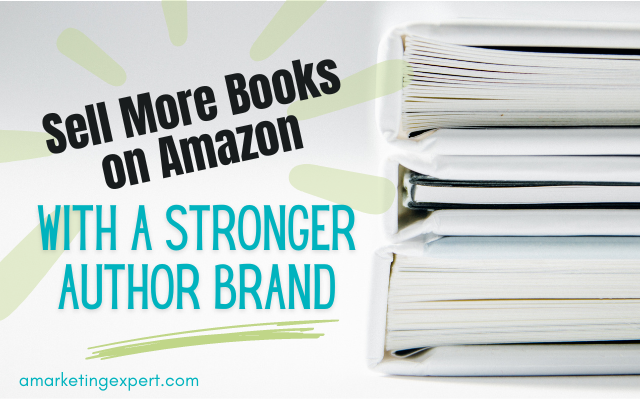In order to sell books on Amazon, you’ve got to have something that readers can’t say no to.
This might seem like a daunting task, but it’s not impossible.
In the end, it’s all about having an Amazon book page that beckons readers to want to know more and encourages them to click the “buy” button.
When an author comes to me and laments the fact that their Facebook ads are sending loads of traffic to their Amazon book page, but book sales are dismal, I can almost guarantee you there is something wrong with your book page, or one of the other points I’ll address in ths piece.
Often authors will put their book up on Amazon and hope for the best. Counting on the idea that the Amazon machine will kick in and promote their book. This never happens.
If you want to get more visibility, and actually sell books on Amazon here are seven things to look for to get started!
Your Keywords and Categories Are Wrong
A number of years ago Google did a study and found that the more keywords a consumer pops into a search bar, the more likely they are to make a purchase. This same idea holds true for Amazon. Sadly, when it comes time to add keywords to your Amazon book page, authors often go with singular options – like “mystery” or “romantic suspense” or “self-help”.
The issue with those keywords, or any type of singular keyword is it causes your book to get lost in the thousands of books being added to Amazon daily.
To gain some traction, you really need to spend some time researching keywords that fit your market and follow consumer trends. And while keyword software is popular, I always recommend doing this research manually.
Why?
Because I try to find keyword strings that are trending on Amazon and doing a search manually will do that.
So how do you do this? Start by typing in your keyword into the Amazon search bar and see what drops down. Amazon uses intuitive search, much like Google does. It’ll give you some keyword strings to start doing some research on.

Also, you’ll want to identify the benefits your book has to the reader. Specifically, what do they gain by reading your book?
All these benefits become part of your book description (which we’ll talk about in a minute) but should also be reflected in your keywords, too.
Your book categories are next up, and I’ve written a lot about both on prior blog posts, so I won’t go too far down the rabbit hole, but you can have 3 categories for your eBook and the more narrow you can get, the better your book will sell.
I know “narrow” may not seem appealing but trust me when I say, consumers are hyper focused on what they want. Regardless of the genre.
A romance reader isn’t going to buy just any romance. They’re probably looking for something specific to what they enjoy reading, whether that’s time travel romance, royal romance, second chance romance, the list goes on.
The point being, the more you can zero in on your book’s content, the better pathways you’ll start creating for your book and the more you’ll sell.
Your Book Description Needs a Polish
Much like your keywords and categories, book descriptions often get jammed into the upload process with little to no thought about how they actually appeal to the reader.
Take a note or two from the keyword and category discussion and zero in on the benefits to your reader.
I recommend reviewing some book descriptions of bestselling books in your genre to get a sense of what’s selling. Here are some additional tips to consider:
Lead with a standout review! This can be a review on the book page itself, or an early review you got for the book that hasn’t appeared on Amazon yet.
Give your book description room to breathe. By this I mean make sure that you aren’t cramming your entire book description into one paragraph of text. Use short sentences and short paragraphs. Bold things that you want to stand out and use bullets to identify your book benefits!
Find your elevator pitch and lead with that. What’s an elevator pitch? Well it’s a 1-2 sentence impact statement about your book.
Maybe it’s a book teaser if you wrote fiction. If you wrote non-fiction your elevator pitch may be asking the reader a question or making a statement like: Do you wish your book marketing efforts could result in more book sales?
Your book description should be enticing, enlightening and make the reader want to know more.
If your book description isn’t doing that, you’re not going to sell books on Amazon.
Your Books Are Disconnected
Of all the things I’ve discussed up to this point, this one is the easiest and often forgotten. Your books should all be connected to you on Amazon and under the umbrella of your Amazon Author Page.
I can tell you that having all of your books connected under your author name is not only helpful to your brand, but it’ll help you come up better in search on Amazon – meaning your books will get found quicker!
Your Bio Isn’t Selling Your Book
Have you added an author photo or bio to your Amazon book page? I’m always amazed at how many authors are satisfied being just a generic grey box on Amazon.

Add your bio and picture. Your bio needs to make sense for who your reader market is. If you write fiction, how can you sound interesting and dialed in to genre fans? If you write non-fiction, don’t just post your resume, be more creative and likable than that. With the redo of the Amazon Author Central pages, your bio is much more front and center than it ever was, so be sure to give it a good polish!
Your Book Pricing isn’t Competitive
Overpricing or even underpricing your book can be a problem. Gone are the days when authors had to mark their books down to .99 cents to make a sale. Savvy book pricing is about being strategic and not pricing yourself out of the market.
If you have a lot of books – or books in a series, maybe consider lowering the price of your first book or first couple of books if they’re already several years old.
Book pricing can make or break the success of a book, so do some research on Amazon before you decide.
Your Book Cover Isn’t Up to Par
Maybe you’ve had some feedback on your cover not being strong enough, or or maybe your reviews are reflecting some negative reactions like “I thought this book was about something else” – then there could be an issue with your cover. And yes, your book description factors into this, too but the first thing the consumer sees on your retail page is your cover. It has to both fit in and stand out – and by fit in I mean fit in with the genre.
I could write an entire blog post on book covers (and I have!) but if you’ve been reading any of our prior blog posts or listening to our podcast, you know how important a book cover is.
Your Author Central Isn’t Optimized
I alluded to Author Central under the bio section, but it deserves its own. There’s a lot of stuff you can add to your book page via Author Central, for example you could add reviews that never made it onto your Amazon page, you could do a fun author interview and add it to your book page. Or videos introducing yourself or other areas of your business.
And all that extra content creates opportunities to include more of your keywords. There are lots of enhancements available to you, for free.
While getting book sales may seem daunting, it doesn’t have to always be an uphill climb. Amazon gets you more exposure than you could ever possibly get on your own – but you have to spend some time with it, even a few minor tweaks could make a world of difference.
Have you done ALL of the things above to sell books on Amazon, or are you inspired to try some new ideas?
Let me know in the comments!
Resources and Free Downloads
Sell books on Amazon more consistently with our free cheatsheet.
And sell books on Amazon without screwing things up with our free planner.
5 simple reasons your ads aren’t working on Amazon.
Boosting your backlist on Amazon can also help create a more consistent sales funnel!





Great article, but I have a question ??
Twice you refer to adding reviews that may not be on Amazon yet.
Where do I find these reviews?
So these can be from places like Midwest Book Reviews, which don’t crosspost to Amazon – or even Kirkus, etc. Make sense?
I got one on BookBub, which I would add to the Amazon page if there were a place for it. Or what about Goodreads? Don’t some people post reviews there but not on Amazon? However, I don’t know where on the Amazon page to put these. There are reader reviews, managed by Amazon, and editorial reviews, which you can add via Author Central. Midwest Book Reviews and Kirkus Reviews are not readers reviews, but rather, editorial reviews, and as I understand it, these don’t have the impact of reader reviews. I don’t understand how you can add reader reviews that originate elsewhere.
Robert hi, you can add them via Amazon Author Central! Good luck!
Thank you fir all the wonderful ideas.
How do I do all the free enhancements to sell my book.
Work hard, Shriyanie! And take it one strategy at a time!
Hi, Penny!
Great, helpful article! I have a question about the categories… the blog says an ebook can have 10 categories, but when I go into my book’s page, Amazon says I can choose UP TO two categories.
Am I missing a place where I can add eight more? Many thanks for helping to clear this up!
Anne hi there, Yes you can add up to 10 via Author Central. Have you read my latest Amazon book? It’s all in there! Wait for it – shameless plug!
How to Sell Books by the Truckload on Amazon
Step-by-step on how to do this!